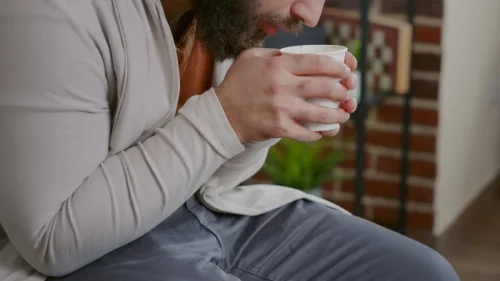
As long as you don’t use marijuana, your symptoms shouldn’t return. If you need help quitting, ask your doctor whether a drug rehabilitation program is a good fit for you. If you’re interested, reach out to a mental health professional like a licensed psychologist or therapist. Because CHS is a fairly new medical condition, not all doctors know about it. Or they might think it’s something else, since repeated throwing up is a sign of many health problems. You may need to see a gastroenterologist, a doctor who specializes in the digestive tract, for a proper diagnosis.
Symptoms and Causes
CHS is a relatively new disorder that is not only difficult to diagnose but to manage. To lower the morbidity, CHS is best managed by an interprofessional team. And, of course, stop using marijuana, which is the only long-term solution. “So, people might not be actively smoking it but still might have a fairly significant amount of THC coming out of your system, and it can be enough to trigger symptoms,” he said. This article will explain the causes of CHS and the available treatment options. The information contained in this site is provided for informational purposes only, and should not be construed as medical or legal advice.
THC detox: Myths, facts, and tips

Ultimately, the treatment of any illness is the removal of precipitating factors, not merely the management of its symptoms. That’s in part because there’s no diagnostic code for cannabinoid hyperemesis syndrome. When patients are discharged from a UCHealth emergency department, the official diagnosis is typically “vomiting,” though the CHS details are entered into the medical record’s notes. Δ9-tetrahydrocannabinol (THC) has several well-established effects in the central nervous system, such as alteration of psychomotor behavior, impairment in short-term memory, stimulation of appetite, and analgesia 8.

Management and Treatment
- Patients with CHS usually remain misdiagnosed for a considerable time period.
- The profuse vomiting and potential dehydration inherent in CHS often mandate intravenous fluids administration to correct electrolyte imbalances and sustain hydration levels.
- The almost pathognomic aspect of a patient’s presenting history is that their symptoms are relieved by hot baths or shower.
- Endocannabinoids are thought to act as either neuromodulators or neurotransmitters 11.
If you have CHS and don’t stop using, your symptoms how long does it take to recover from cannabinoid hyperemesis syndrome like nausea and vomiting are likely to come back. Nearly 100 different metabolites have been identified for THC 24. The two major metabolites found in humans are 11-hydroxy-Δ9-tetrahydrocannabinol (11-OH-THC) and 11-nor-9-carboxy-THC- Δ9-tetrahydrocannabinol (THC-COOH) 20. 11-OH-COOH is a psychotropic metabolite that is equipotent to THC in terms of producing psychic effects and lowering intraocular pressure 25.
- They agreed with the CHS diagnosis and ordered monitoring of his levels, which improved with the rehydration again.
- However, cases of it have increased since the legalization of marijuana in several states.
- A 2017 review of studies found that 97.4 percent of people who developed CHS reported using cannabis at least weekly.
- By Anna GiorgiGiorgi is a freelance writer with more than 25 years of experience writing health and wellness-related content.
- People with CHS often find temporary relief from these symptoms by taking hot baths and showers.

Chronic cannabis use is the primary risk factor for developing CHS. Using cannabis for a prolonged period increases your risk of this condition. While any amount of long-term cannabis use can lead to CHS, daily cannabis use seems to be more likely to cause CHS than using it less often. They can begin as mild problems that make you feel sick in the morning.

The Endogenous Cannabinoids (Endocannabinoids)
- After stopping cannabis use, symptoms generally resolve within days or months.
- Once the proper dose of CBD is found, the individual is able to continue CBD without side effects.
- Cannabinoid hyperemesis syndrome (CHS), or cannabis hyperemesis syndrome, is still a relatively recent discovery.
- Darmani has suggested that cannabis increases the core body temperature while concomitantly decreasing skin temperature thus increasing blood flow to the skin and dissipating excess core body heat 72.
Research is ongoing on the exact way that cannabis triggers this problem. In the meantime, the best way to relieve CHS symptoms is to stop using the drug. If symptoms persist and you continue to use cannabis, you may experience more severe problems that require hospitalization for treatment. Ceasing and abstaining from the use of cannabis is the only treatment that relieves and prevents symptoms of CHS, according to a systematic review on CHS management.
